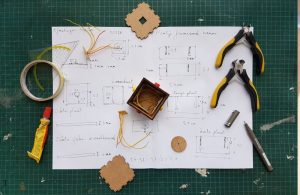Last Updated on February 8, 2024 by teamobn
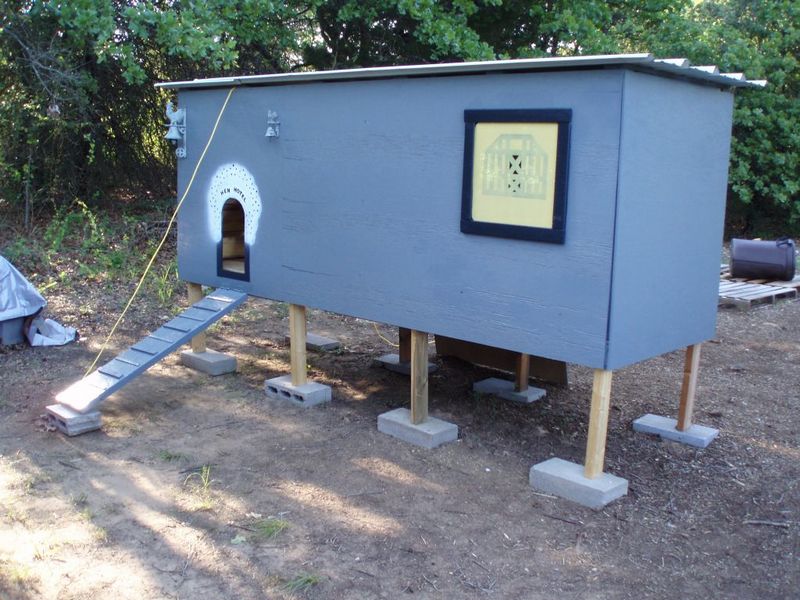
Chickens are among the best helpers in the garden. They are excellent at shredding compost. They are also good at plucking weeds, moving mulch, and digging holes in the soil if you need them. But raising chickens does mean some added responsibilities, and foremost among these is keeping them safe from predators. A good way of doing this is building a pallet chicken coop.
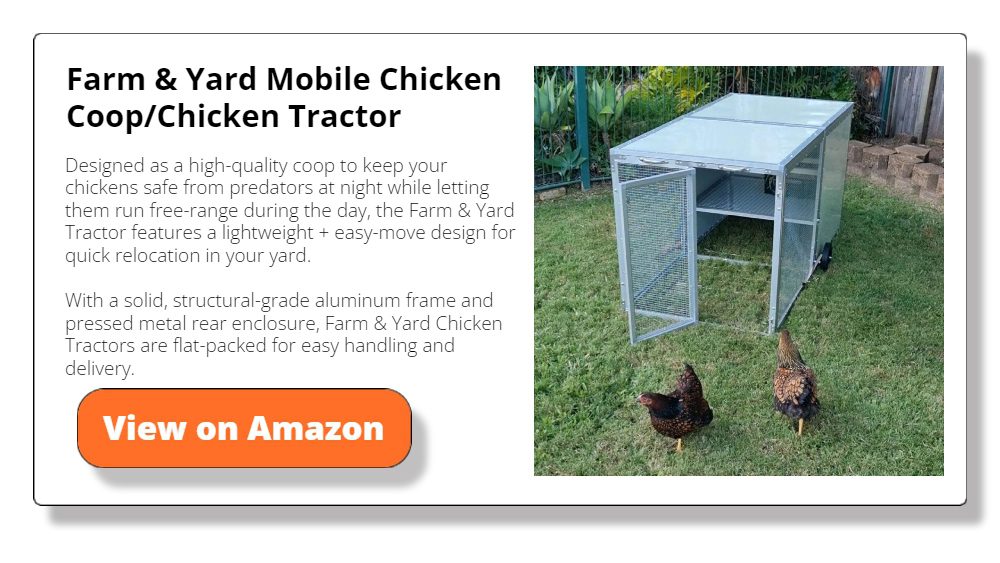
The best part is that you don’t have to dismantle the pallets. You can easily join them together as long as the pallets are the same size. It’s easy to build and cost-effective.
What do you think of this chicken coop? Isn’t it cool?
While rural residents commonly use advanced agricultural facilities with cutting-edge technology, urban dwellers passionate about poultry still utilize their backyard space by constructing a smart pallet chicken coop.
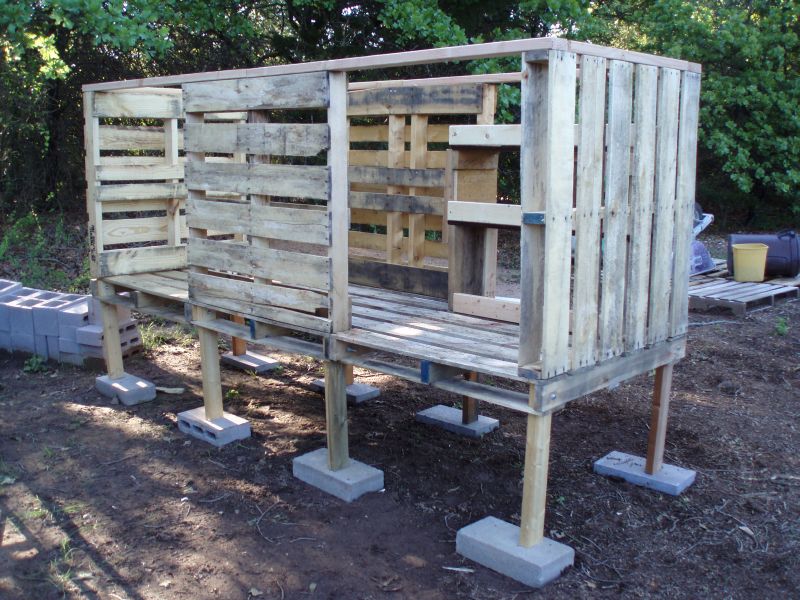
A Simple Guide to DIY Pallet Chicken Coop Building
Are you considering getting some chickens for your backyard? No problem! You just need to tap into your creative, resourceful, and DIY side.
This guide is packed with all the deets on how to make it happen. You’ll be chowing down on fresh eggs in no time.
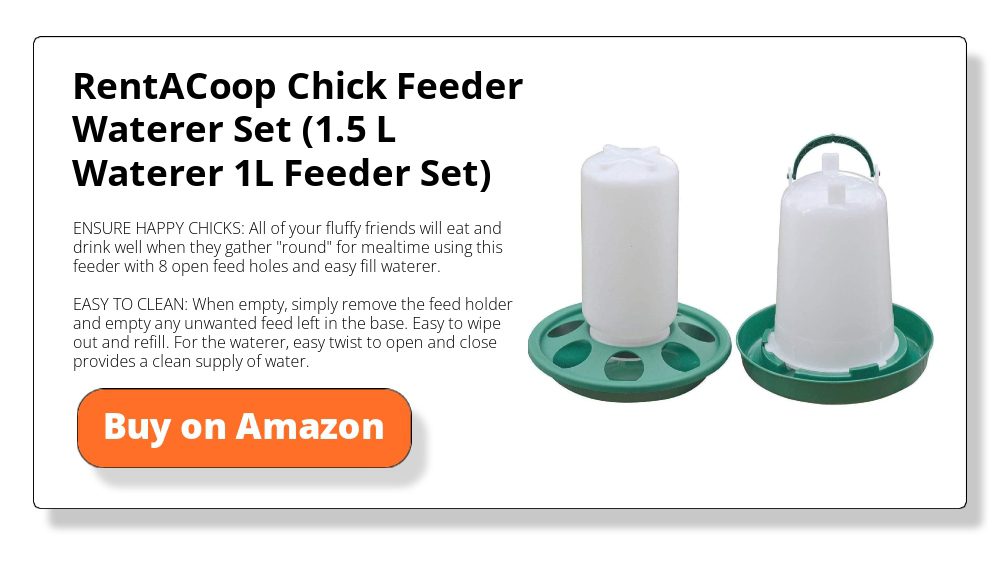
If you’re in the mood for some DIY fun or want a new project to tackle, you gotta peep this sweet way to make your chicken coop using pallets. No need to freak out about getting all the supplies, and don’t sweat it if you’re not a master craftsman, the steps are a breeze to follow. Plus, there are some seriously awesome tips to make your coop look epic.
Ready to start creating a cozy and secure home for your feathered friends? Dive in and discover the joys of building a DIY pallet chicken coop!
Materials
- Pallets
- 1/2″ Plywood
- 18″ Square Glass
- Rope
- Bolts, Hex Nuts, and Washers
- Waterproof Wood Glue
- Cement Blocks
- Door Handles
- Paint
- Magnet Latches
Tools
- Jig Saw
- Paintbrush
- Power Drill
- Wrench
Instructions
Step 1: Prepare the Site and Materials
Choose a level spot in your garden for the chicken coop. Clear the area of debris and lay down cement blocks as a foundation to protect the coop from moisture and predators. Collect enough pallets for your project, ensuring they are in good condition.
Step 2: Build the Frame
Using the pallets, construct the frame of your chicken coop. Secure the corners with bolts, hex nuts, and washers. For a standard size coop, use at least four pallets for the walls. Use the power drill to make holes for the bolts and tighten them with a wrench.
Step 3: Add the Floor and Roof
Cut the 1/2″ plywood to fit the inside dimensions of your frame for the floor. Secure the plywood floor inside the frame with wood glue and screws. For the roof, attach two more pallets at an angle to allow rainwater runoff, or use plywood for a flat roof.
Step 4: Install the Door and Windows
Use the jig saw to cut out a door on one side of the coop and a space for the 18″ square glass window to let in light. Install the door using hinges and attach the door handle. Secure the glass with waterproof wood glue and frame it with pallet wood strips.
Step 5: Add Nesting Boxes and Perches
Inside the coop, create nesting boxes from the remaining plywood and secure them to the walls with screws. Install perches by fixing horizontal pallet wood bars or sturdy branches across the interior.
Step 6: Paint and Decorate
Paint the exterior of your pallet chicken coop with non-toxic, water-based paint. Let it dry completely before moving on. Add external decorations like hanging flower pots or solar lights for extra charm.
Step 7: Secure with Magnet Latches
Install magnet latches on the door and nesting box lids to keep them securely closed but easily accessible for egg collection and cleaning.
Step 8: Finish with Rope Details
Add rope around the roof’s edges or use it as a decorative element on the coop’s exterior for a rustic touch.
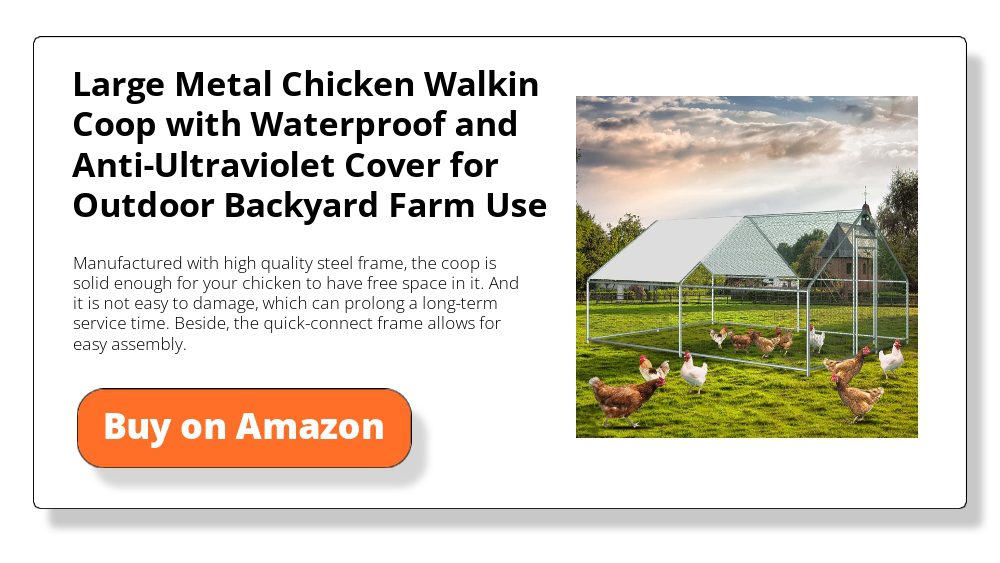
Not only will a DIY pallet chicken coop provide a safe and comfortable home for your chickens, but it will also save you money on store-bought eggs. But building a chicken coop from scratch can be expensive.
On the good side, there are free DIY pallet chicken coop plans available that are easy to follow and can be customized to fit your specific needs.
You can totally whip up a kickass coop that will keep your feathery companions clucking with joy, whether you’re a pro-DIY-er or a beginner to the coop game. Check out these free chicken coop plans, and you’ll have a coop that’s both functional and stylish in no time.
Click on any image to start the lightbox display. Use your Esc key to close the lightbox. You can also view the images as a slideshow if you prefer 😎
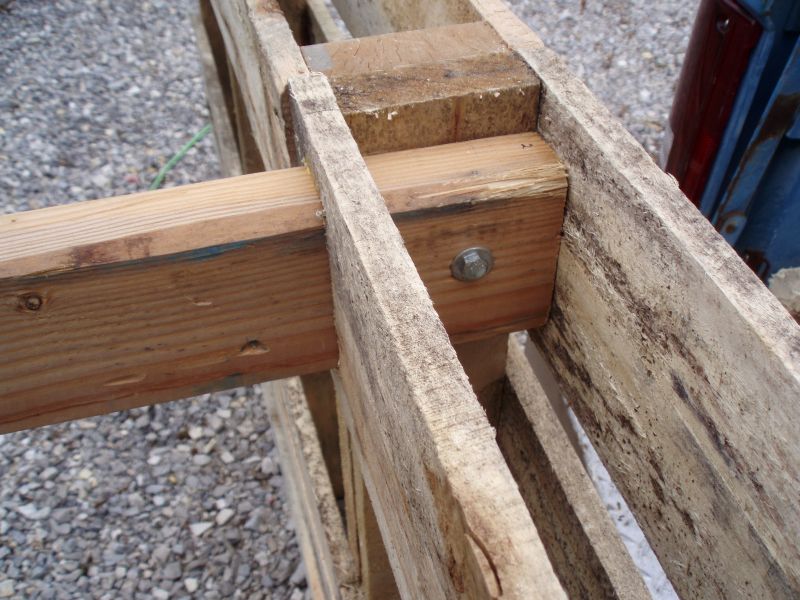
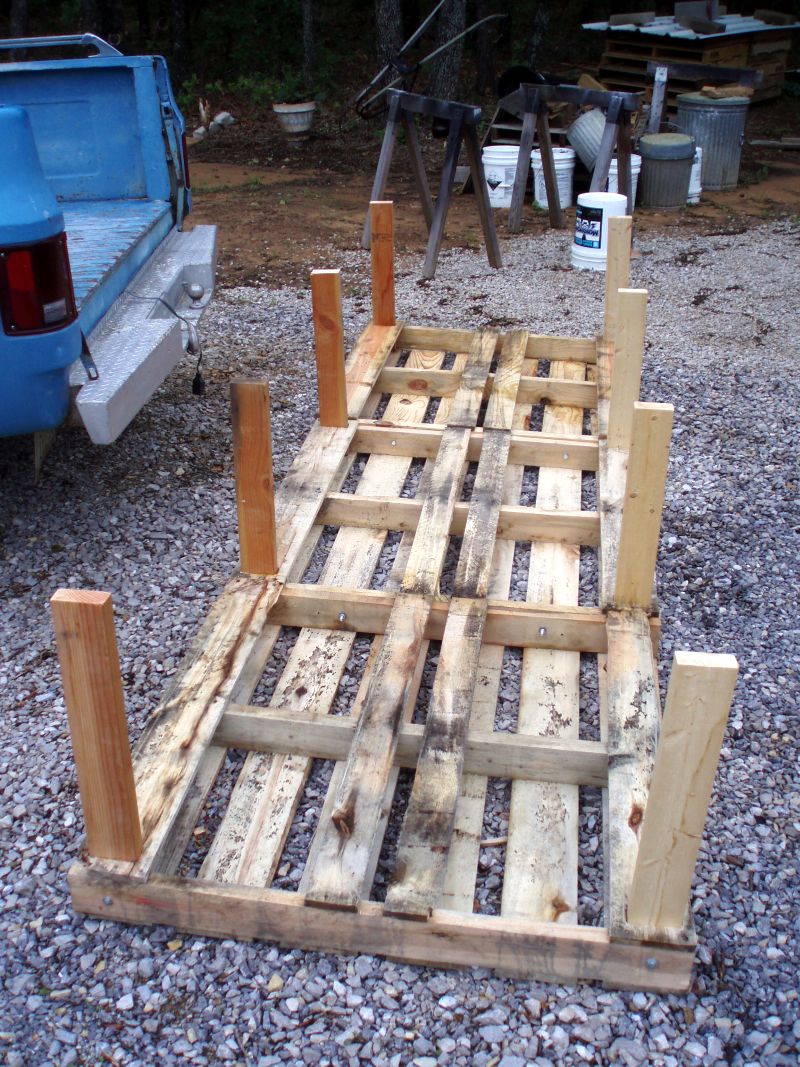
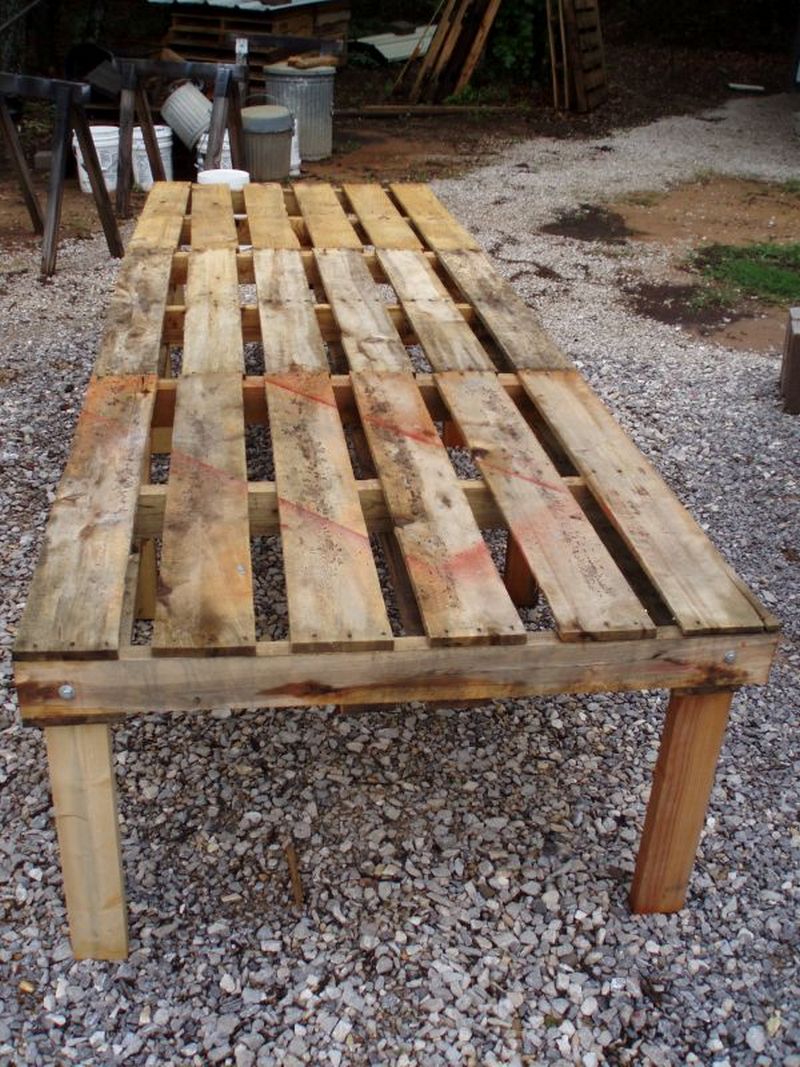
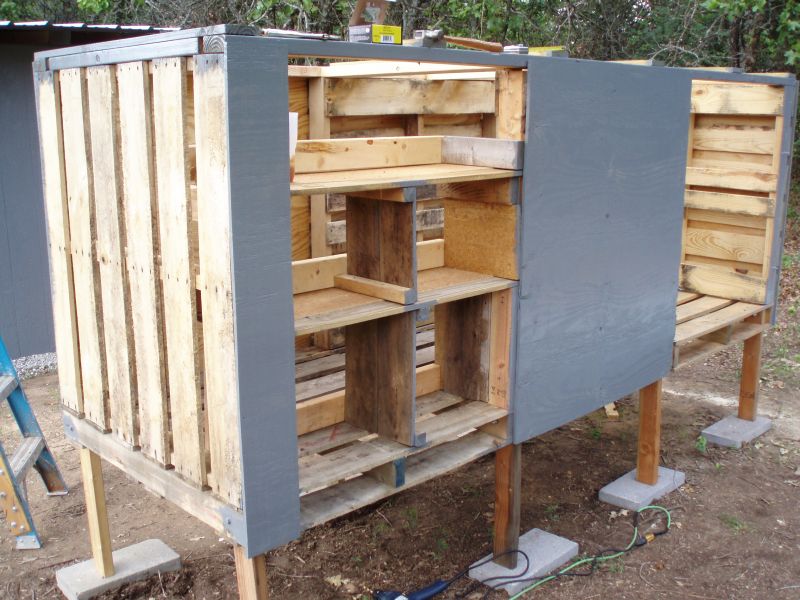


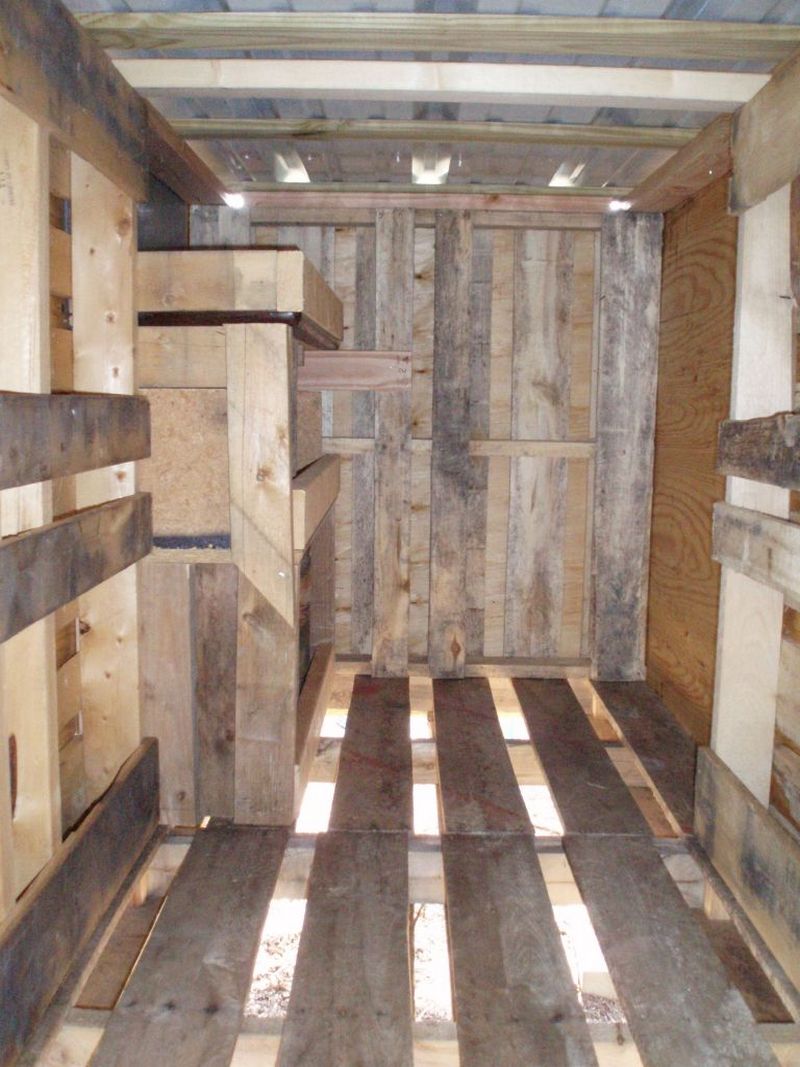
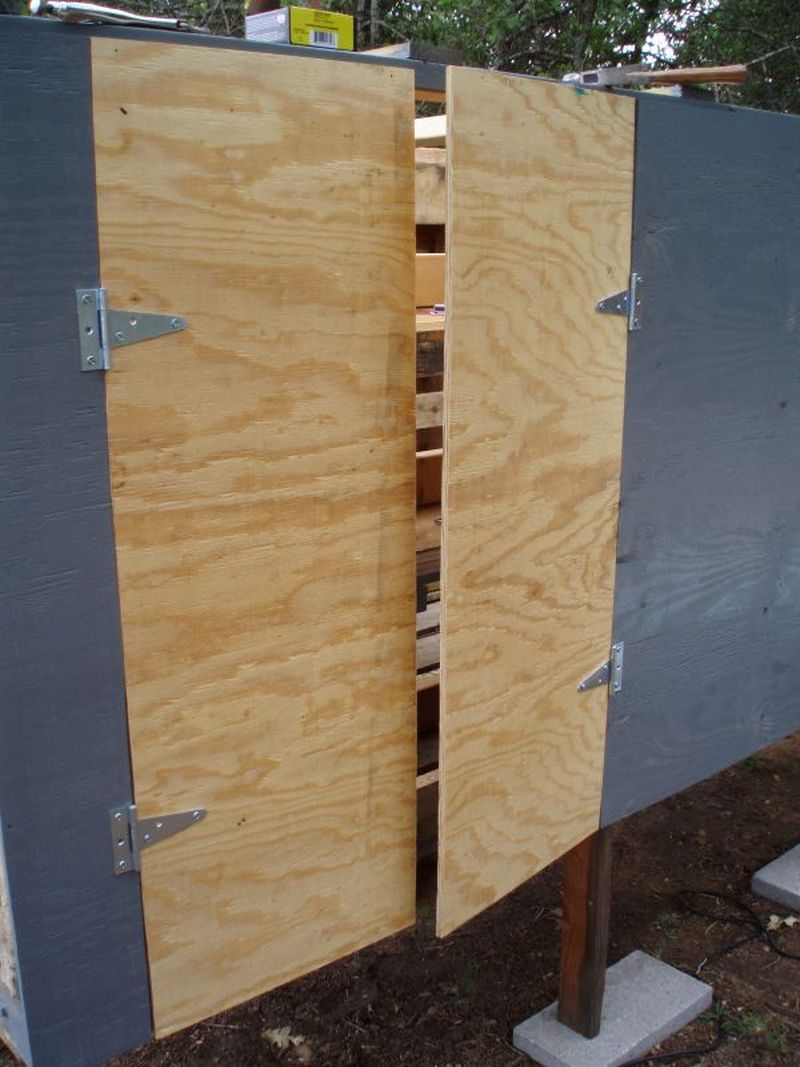
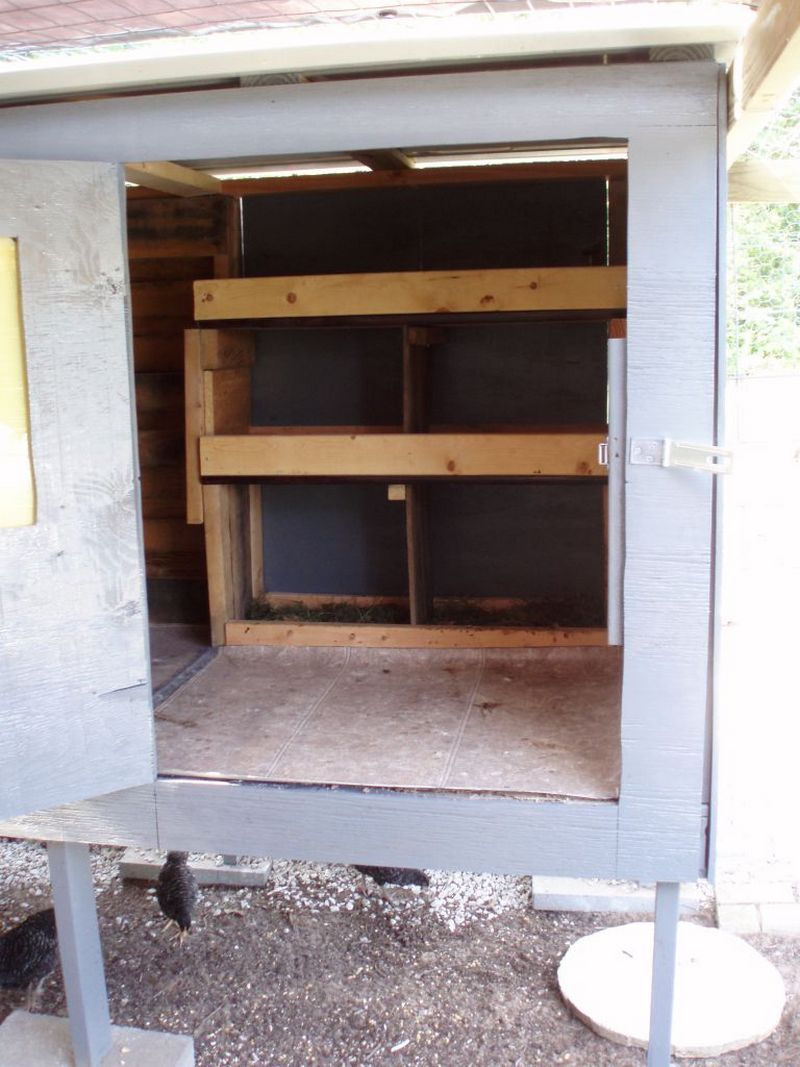
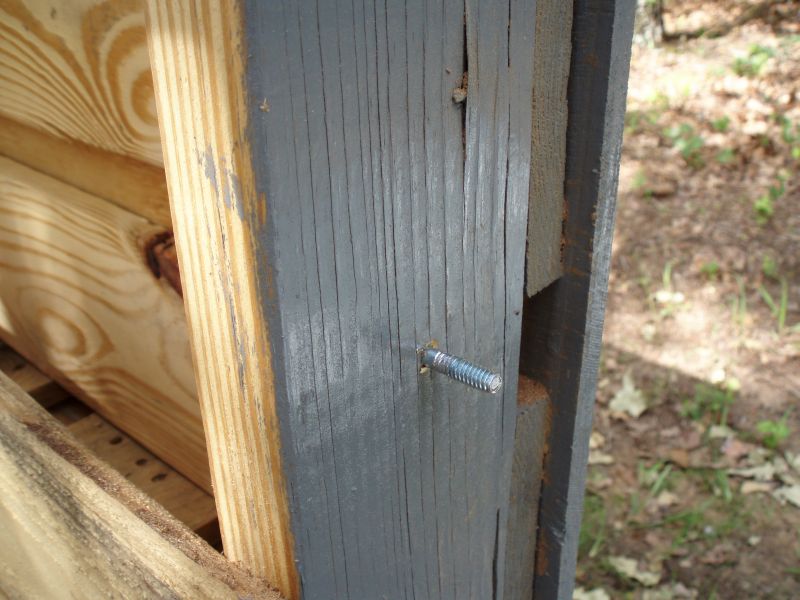
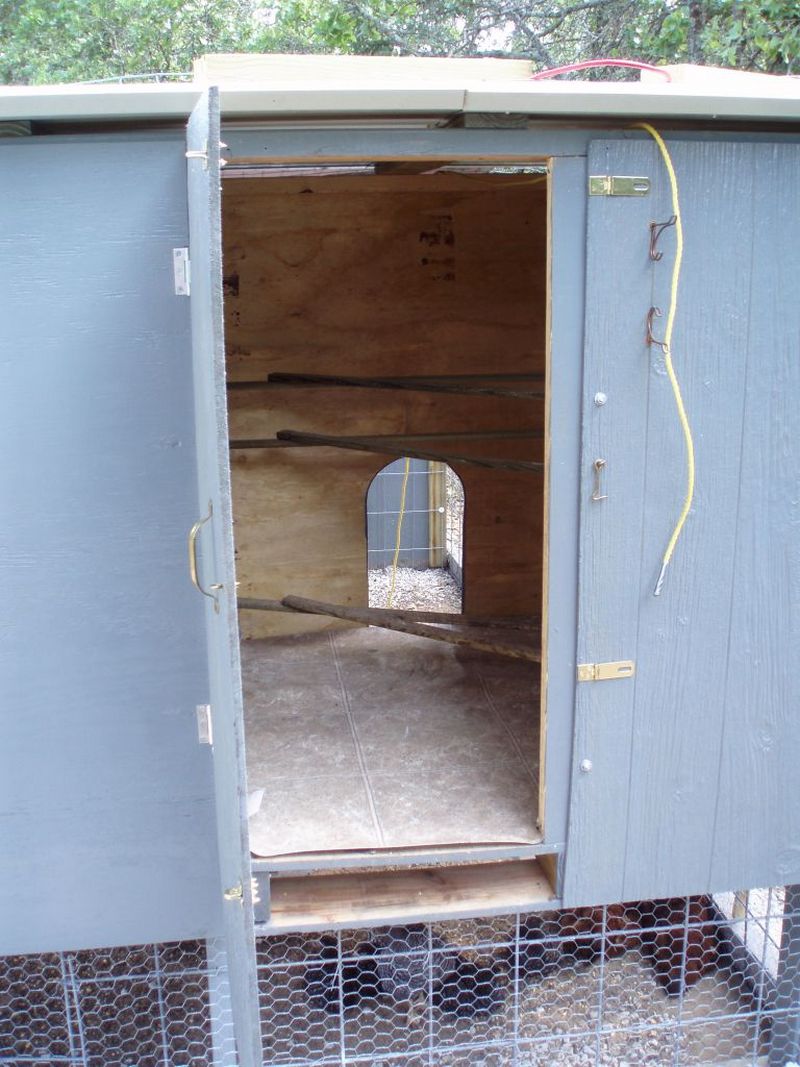
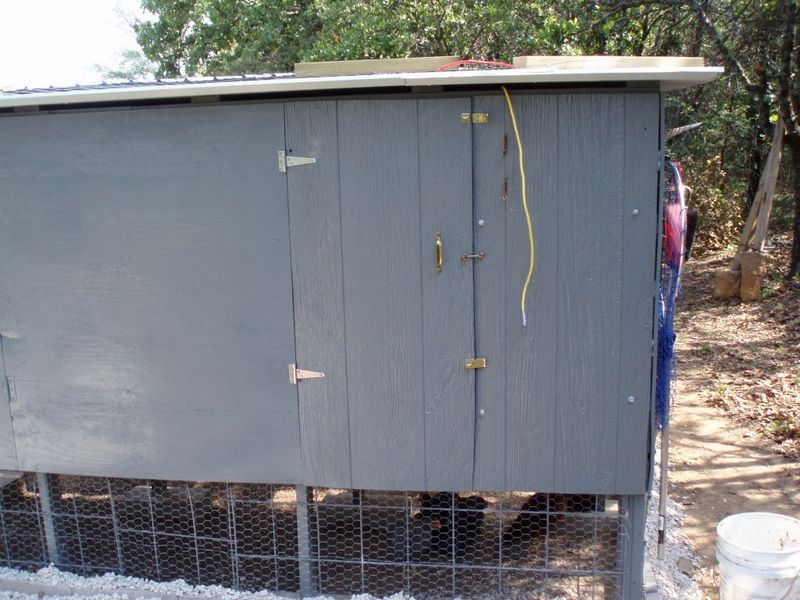
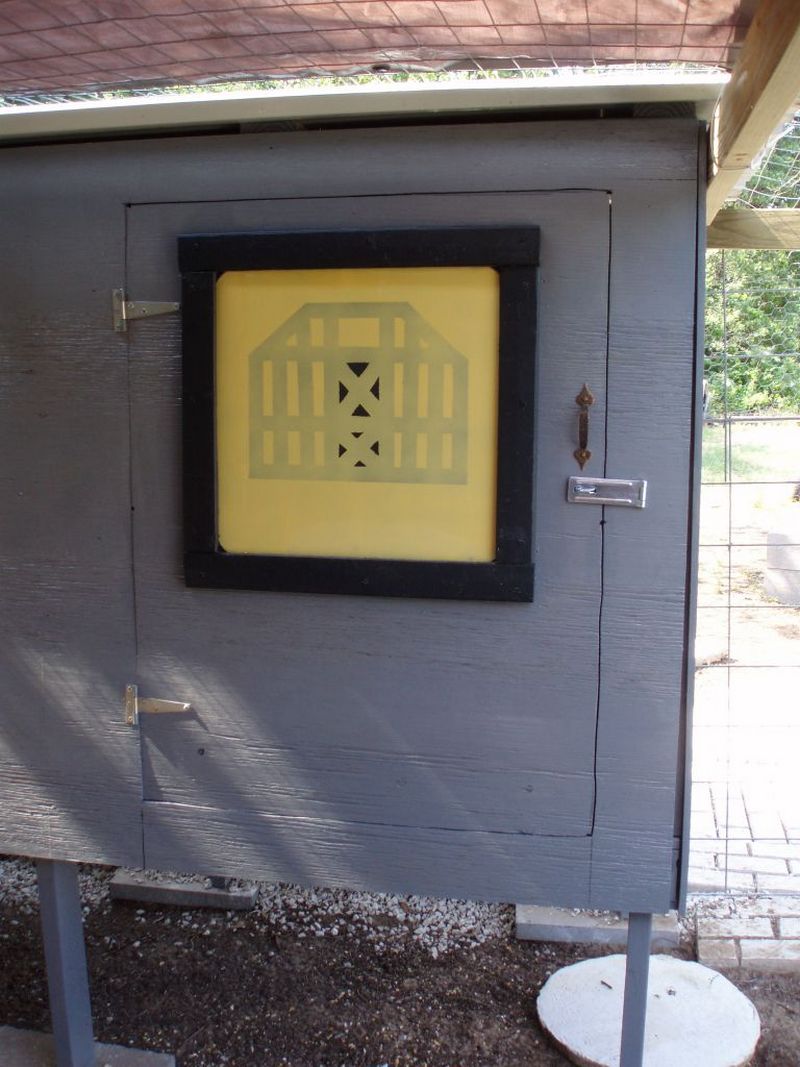
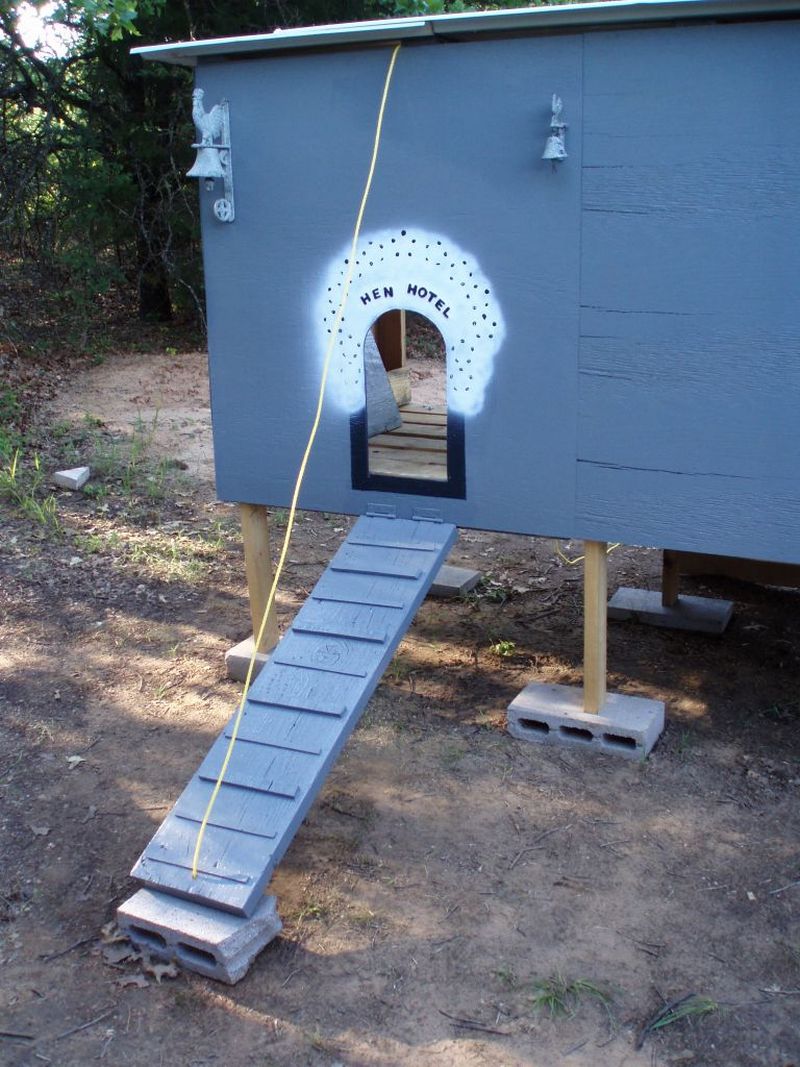

Practical Tips
If you’re up for the challenge of building your own pallet chicken coop, keep these practical tips in mind to maximize your chances of success:
1. Choose sturdy pallets
When choosing sturdy pallets for your pallet chicken coop, it’s crucial to assess each pallet carefully before incorporating it into your design. The quality and condition of the pallets are foundational to the safety, durability, and overall success of your chicken coop project.
Start by inspecting each pallet for signs of wear and tear. Look closely for any rot, decay, or structural damage. These issues can significantly affect the integrity of the coop, making it less secure for your chickens. Strong and in good condition pallets will provide a solid foundation for your coop.
Consider the history of the pallets as well. Pallets exposed to moisture or left outside in rough weather are more likely to be weakened or damaged. This exposure can compromise the pallet’s strength over time, posing a risk to the stability of your pallet chicken coop. Selecting pallets that have been stored properly and are free from weather-related damage is key to building a durable coop.
Another important factor to consider is the treatment of the pallets. Some pallets are treated with chemicals to extend their lifespan or prevent pest infestations. However, these chemicals can be harmful to chickens if they peck at or come into close contact with the treated wood.
It’s essential to choose pallets that have not been chemically treated or to opt for those treated with safer methods, such as heat treatment (marked with “HT”), which poses no risk to your chickens.
Choosing pallets in tip-top shape goes beyond just the immediate appearance. It involves considering the pallet’s history, treatment, and structural integrity.
By selecting high-quality, untreated pallets that are free from damage and decay, you’re ensuring that your feathered friends will have a safe, cozy, and stable home. This attention to detail in the selection process lays the groundwork for a successful pallet chicken coop that will stand strong and provide a secure environment for your chickens for years.
2. Insulate and ventilate
Ensuring your pallet chicken coop is well-insulated and properly ventilated is crucial for the comfort and health of your chickens throughout the year. Proper insulation helps maintain a stable temperature inside the coop, protecting your chickens from extreme summer and cold winter temperatures.
You can achieve effective insulation using materials like foam board, fiberglass batts, or recycled denim insulation. These materials can be applied to the coop’s walls, ceiling, and floor, creating a barrier that helps to keep the interior temperature consistent.
When insulating your pallet chicken coop, pay special attention to the quality and placement of the insulation materials. Ensure the materials are securely fitted and cover all necessary areas to prevent heat loss or gain.
Additionally, consider your chickens’ safety and health by choosing non-toxic insulation materials that do not pose any risk if pecked at or ingested.
Ventilation is equally important in a chicken coop. Good ventilation ensures fresh air circulates throughout the coop, removing excess moisture, ammonia, and other harmful gases. This fresh air circulation is vital for maintaining a healthy environment inside the coop and preventing respiratory issues among your chickens.
To create an effective ventilation system, install vents near the roof and the coop floor. This placement allows cool air to enter from the lower vents while warm, moist air escapes through the upper vents, ensuring a continuous fresh air flow without causing drafts that could chill your chickens.
Incorporating windows into your pallet chicken coop design serves multiple purposes. Windows allow natural light to enter the coop, which benefits the chickens’ health and well-being. They also contribute to the ventilation system, especially when designed to open and close. This adjustability lets you control the airflow based on the weather conditions, ensuring the coop remains well-ventilated without becoming too drafty or cold.
A well-insulated and ventilated pallet chicken coop is essential for creating a comfortable living space for your chickens. It ensures the coop’s internal environment remains healthy and conducive to your chickens’ happiness and productivity. By carefully planning and implementing insulation and ventilation in your coop design, you can achieve a balance that keeps your chickens cozy, safe, and happy throughout the year.
3. Incorporate easy access points
Designing your pallet chicken coop with convenient access points is essential for effective maintenance, feeding, and egg collection. Integrating hinged doors or removable panels into the coop design allows for straightforward access to the interior, simplifying daily tasks such as cleaning, replenishing food and water, and collecting eggs.
This approach makes maintenance tasks easier for you. It also minimizes stress on the chickens, reducing the need for disruptive access methods.
Ensuring that food and water supplies are easily accessible is crucial for the health and well-being of your chickens. Placing these essentials in areas that are easy to reach for both you and your chickens encourages regular consumption and helps maintain a clean and orderly coop.
Additionally, designing simple nest boxes for chickens to enter and exit promotes natural laying behavior. A coop that prioritizes easy access and straightforward maintenance creates a more efficient and enjoyable environment for both the chickens and their caretakers.
4. Provide adequate nesting boxes and perches
Nesting boxes and perches are vital components of a chicken coop, serving as places for laying eggs and roosting. When incorporating these elements into your pallet chicken coop, it’s important to ensure they are not only present but also thoughtfully designed.
Nesting boxes should be spacious enough for the hens to lay their eggs in privacy and comfort, and there should be enough boxes to accommodate the laying needs of your flock.
Perches, on the other hand, offer chickens a natural resting place that mimics their instinct to roost in trees. Utilizing sturdy branches or wooden beams to create perches at various heights gives chickens the option to select their preferred spot.
These perches should be wide enough to allow the chickens to stand comfortably without losing balance and positioned at a safe height above the ground to protect them from threats.

Regular Maintenance of Pallet Chicken Coop
Regular maintenance is key to ensuring your pallet chicken coop remains a healthy and safe environment for your chickens. A well-maintained coop promotes your birds’ well-being and prevents the buildup of harmful pathogens and parasites. Here are detailed steps to keep your coop in top condition:
Perform Routine Checks
Regularly inspect your chicken coop for any signs of wear, damage, or potential entry points for predators. Look out for loose boards, holes in the fencing, or weakened structure sections. Early detection of these issues allows for timely repairs, keeping your coop secure against threats and extending its lifespan.
Clean Bedding and Waste
Keeping the coop clean is essential for preventing disease and maintaining a pleasant living environment for your chickens. Remove dirty bedding, droppings, and any uneaten food daily. Replace the bedding with fresh, clean material to keep the coop dry and comfortable. This routine helps control odors and reduces the risk of infestations by mites, lice, and other pests.
Disinfect Regularly
In addition to removing waste and replacing bedding, it’s important to disinfect the coop periodically. Use a safe, non-toxic disinfectant to clean the walls, floor, nesting boxes, and perches. This step is crucial in eliminating harmful bacteria and viruses that could compromise your chickens’ health. Ensure the coop is thoroughly dried before allowing your chickens back inside after disinfection.
Monitor for Pests
Regular maintenance should also include monitoring for signs of pests such as rodents or insects. These pests can cause structural damage to the coop and pose health risks to your chickens by spreading diseases. Implement preventive measures like sealing gaps, maintaining cleanliness, and using natural deterrents to keep pests at bay.
Maintain Feeding and Watering Equipment
Ensure that feeders and waterers are clean and functioning properly. Dirty or malfunctioning equipment can lead to contamination and spread of disease among your chickens. Regular cleaning and inspection of these items ensure that your chickens can always access fresh water and food.
By adhering to a regular maintenance schedule for your pallet chicken coop, you contribute significantly to the health and happiness of your chickens. A clean, secure, and well-maintained coop is fundamental to allowing your birds to live their best life, providing them with a comfortable and safe home where they can thrive.
FAQ on Building and Maintaining a Pallet Chicken Coop
What materials do I need to build a pallet chicken coop?
How do I choose the right pallets for my chicken coop?
How can I ensure my pallet chicken coop is well-insulated and ventilated?
What are some easy access features I can incorporate into my pallet chicken coop?
How many nesting boxes and perches do I need in my pallet chicken coop?
What regular maintenance does a pallet chicken coop require?
Can I paint my pallet chicken coop?
How do I protect my pallet chicken coop from predators?
Conclusion
This comprehensive guide teaches you the three essential components of building a DIY pallet chicken coop. Following these guidelines, you can create a practical, cost-effective coop for your feathered friends.
It emphasized the importance of selecting sturdy and undamaged pallets and ensuring proper insulation and ventilation in the coop. If you wanna make sure your chickens are chill and comfy all year long, you gotta take some precautions.
And once you’ve got these down, you can DIY your own pallet chicken coop like a pro!
If you liked this project, you will also like viewing these DIY Pet homes…




